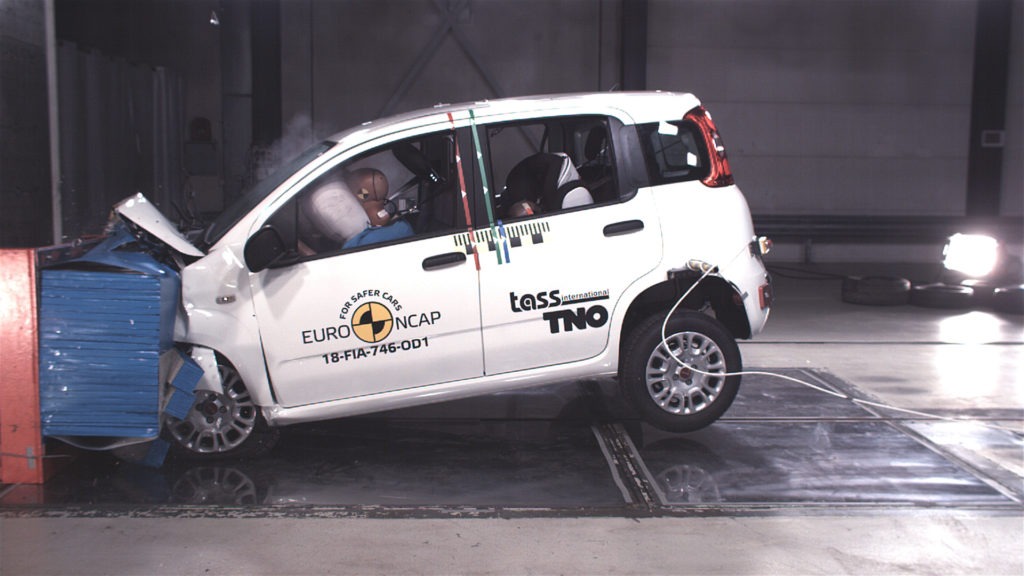Interview: Michiel van Ratingen, Secretary General, Euro NCAP – Part 2
18 December 2018

18 December 2018
By Phil Curry
In the first part of the Autovista Group interview with Michiel van Ratingen, Secretary General of Euro NCAP, we discussed the organisation and its changing role in vehicle safety. In this second part, we discuss the challenges it faces with future vehicle technology.
What challenges do autonomous vehicles pose in safety testing?
Automated driving is quite a challenging topic for all those involved. There is a lot of research, much development required and it brings in a number of new players in the marketplace. It is clear to us that if you look at the articles around autonomous driving, safety is always mentioned as a key driver. The argument here is that 90-95% of all crashes are caused by human error. That may be true, but if you read such reports carefully, it is not implied that if you replace the human, then accidents would disappear.
However, it should be true that if you take control away from the driver, you will introduce safer roads as a result. Yet you also introduce other concerns at the same time, such as how safe the vehicle automation actually is, worries about cybersecurity, are the sensors always capable of identifying critical situations and acting accordingly and so on. Therefore, these new traps come in that we have to be careful about.
Euro NCAP’s approach is to look at what is already on the market, which is why we carried out our first Highway Assistant test recently. We are looking at the question as to whether the systems that are available allow drivers to rely on them all the time or should they be identified as ′advanced driver systems’ that can assist the driver but require human intervention at times.
Our initial work has shown that there are huge differences in philosophy among the vehicle manufacturers; you have basic technology, and much more advanced technology, with the levels of input required differing between carmakers. The risk of over-reliance can be very different from manufacturer to manufacturer too. This showed, therefore, that it is not an easy topic which you can standardise in the future; you have to look carefully at how you consider the technology.
We advocate that automated driving technology should not, at this stage, be referred to as ′self-driving’ but more as ′assistance technology’ that is designed to carefully balance the driver and machine. Too much machine will lead to over-reliance but if too much human input is required, drivers would not accept it as a viable solution. We need to take careful steps forward in automated driving technology.
What difference do electric vehicles pose?
In normal standard crash testing, there are already basic stipulations to ensure there is a safe system for both electric and hydrogen vehicles. As a consumer organisation, there is not much we can do to guide them any further in their design implementation.
However, we can look at the situation post-crash. For example, what if somebody needs to go and rescue the occupants of an electric vehicle (EV) following an accident? There could be a fire or electric shock risk in EVs – or the risk of a gas leak gas in the case of hydrogen vehicles. There are all sorts of risks that we knew how to handle with petrol vehicles but now we do not have the solution with modern technology.
Therefore, Euro NCAP has engaged with an organisation called CTIF, an international association of fire brigades and first responders, to see how we can design requirements that we can impose on vehicle manufacturers. Our objective is that no matter what happens after a crash, first responders can do their jobs by knowing where to cut into the vehicle’s body and where the kill switch is. This is available on a car-to-car basis, but if you are called out at midnight and have to drive on a small road in the dark, it is sometimes hard for these people to identify what car it is and to have the information at the scene in order to make the correct judgements.
We are therefore working to develop a rescue-sheet database that will be free of charge for all the professional and non-professional first aid responders in Europe. For each model we test, we will provide specific information.
Consumer attitudes towards data have changed in the 21 years since Euro NCAP was founded. Do you feel that the different videos provided by the organisation offer more impact through social media sharing?
It is a big challenge for us. On the one hand, you would say that across social media, the whole way we communicate the information we have with consumers has changed significantly. In the past, we expected magazines to publish our stories and images. With social media, the dynamic is different. We have to push information out ourselves. With magazines, the information was provided in front of you. But, today, if you are not interested in vehicle safety, you will not look for it. It is very hard, therefore, to reach people and to get information through to people’s Facebook or Twitter accounts.
It is also very difficult to stand out. In the past, when you had a one or two-star car, it was big news. Today, it might only be big news for an hour or so before something else comes along to replace it. What we see is that today we are spending a significant amount of time on communication compared to the past. The efforts we are making to cover all bases have greatly increased.